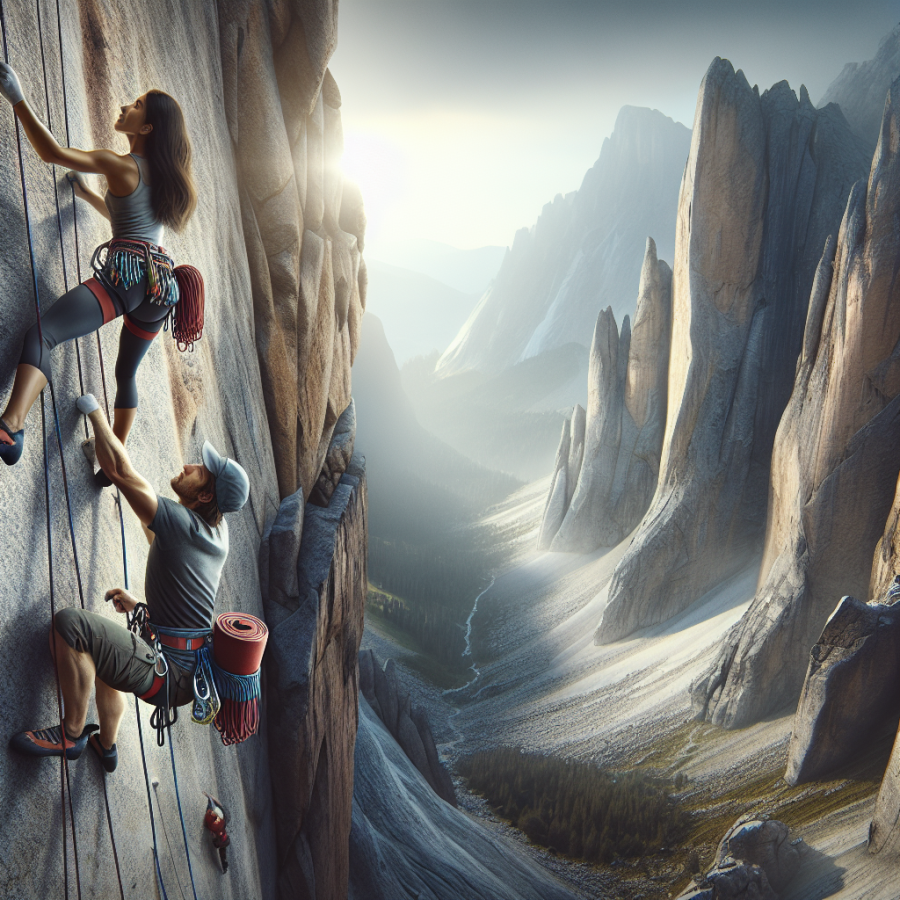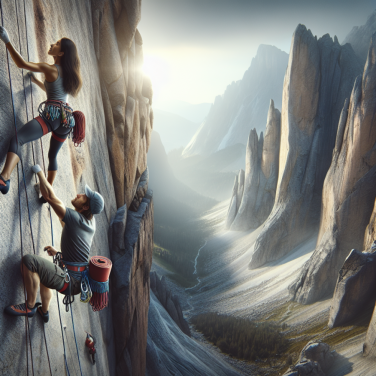Mastering the Basics: Essential Gear and Techniques for Multi-Pitch Climbing
As you gear up for the challenge of multi-pitch climbing, mastering the basics of both your equipment and your climbing techniques is vital to ensure safety, efficiency, and enjoyment throughout your ascent. Whether you are transitioning from single-pitch climbs or looking to refine your multi-pitch expertise, certain gear and skills form the bedrock of your climbing experience.
**Essential Gear for Multi-Pitch Climbing**
- **Climbing Harness**: A comfortable, adjustable harness with gear loops to hold all your equipment is crucial. For multi-pitch routes, opt for a harness with a higher number of gear loops and ensure it's well-padded for long periods of hanging or belaying.
- **Helmet**: Protecting your head should be non-negotiable. Invest in a climbing-specific helmet that fits well and is properly ventilated.
- **Climbing Shoes**: Comfort goes hand in hand with performance when it comes to multi-pitch. Your shoes should be snug but not painfully tight, offering both sensitivity and support. Consider shoes that you can wear for extended periods without excessive discomfort.
- **Belay Device**: A versatile belay device that's suitable for multi-pitch climbing and can accommodate different rope diameters is essential. Devices that allow smooth feeding and have auto-blocking features can be a plus.
- **Ropes**: A pair of twin or half ropes is often preferred for multi-pitch climbing to reduce weight and drag and provide redundancy in case one rope gets damaged. Make sure your ropes are appropriately rated and in good condition.
- **Protection**: Your rack should be tailored to the specific climb. This will typically include a mix of cams, nuts, and perhaps hexes, along with quickdraws and alpine draws for clipping into bolts or gear placements. Having a variety of sizes and knowing how to place them efficiently is key.
- **Personal Anchor System (PAS) or Slings**: To secure yourself at belay stations, a PAS or slings with locking carabiners is necessary. They should be strong, easy to adjust, and quick to deploy.
- **Rescue and Miscellaneous Gear**: Prusik loops, a knife, a headlamp, and a few spare carabiners can come in handy during unexpected situations or emergencies.
**Techniques for Multi-Pitch Climbing**
- **Efficient Gear Placement and Removal**: Learning how to quickly and safely place and clean gear will save you time and energy.
Read also:
The Bruising Ballet: Unpacking Traditional Shin-Kicking
Building a Safety System: Advanced Tips for Successful Multi-Pitch Ascents
Multi-pitch climbing is an exhilarating way to enjoy the majesty of the vertical world, but it demands a robust safety system that leaves no room for error. To ensure that your ascent is not only successful but also secure, consider these advanced tips that cater to both the technical and the unexpected aspects of multi-pitch climbs.
**Redundancy is Key**
Never rely on a single point of protection. Always aim for redundancy in your anchors and gear placements. When building anchors, use at least three pieces of protection when possible. If one piece fails, you have backups to bear the load. Make sure that each piece of gear is placed in solid rock and that they are not all reliant on the same rock feature, which could compromise the entire anchor system if it fails.
**The Quad Anchor System**
One of the most versatile and secure anchor systems is the quad. This system uses four legs of equal length and allows for two independent and redundant points for the climber and belayer to tie into. With the ability to absorb multi-directional forces, the quad is particularly useful when dealing with traverses or routes that change direction.
**Dynamic Belay Techniques**
In a multi-pitch setting, a lead fall can generate significant force. Utilize dynamic belaying techniques to reduce the impact on the climber, the gear, and the belayer. This includes giving a soft catch by slightly jumping up or stepping forward when the leader falls, which can lessen the shock on the entire system.
**Rope Management Skills**
Rope drag can be a serious issue on long or wandering routes. Use extendable quickdraws or alpine draws to allow the rope to run more smoothly. Also, be strategic about the placement of protection to guide the rope in a way that minimizes sharp bends or zig-zags. Always flake your ropes neatly to avoid tangles and knots, which can be frustrating and time-consuming to deal with mid-pitch.
**Communication Systems**
With distance and wind often being factors, verbal communication can become virtually impossible on large faces. Develop a set of rope tugs as signals for key commands such as "take slack," "that’s me," or "belay off." Alternatively, consider using two-way radios to maintain clear and constant communication.
**Advanced Rescue Techniques**
Every climber should be versed in basic self-rescue, but on multi-pitch routes, advanced rescue skills are paramount.




